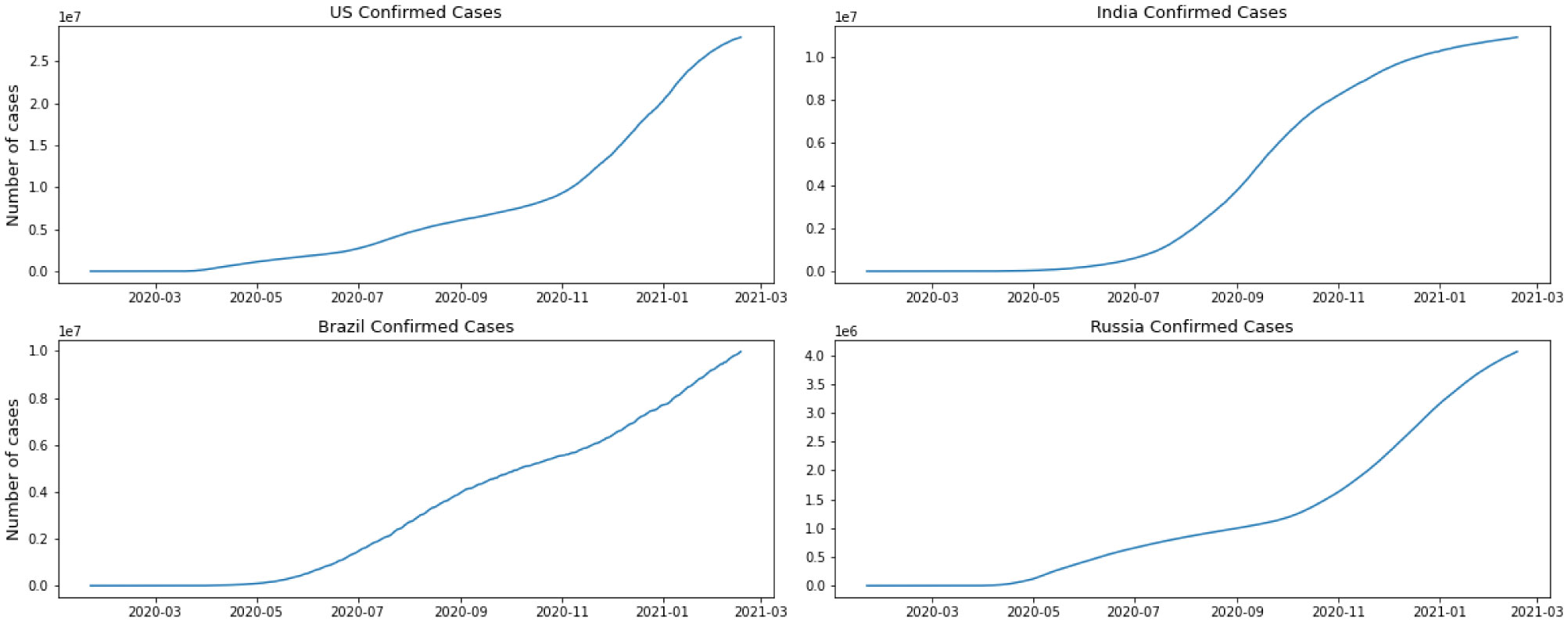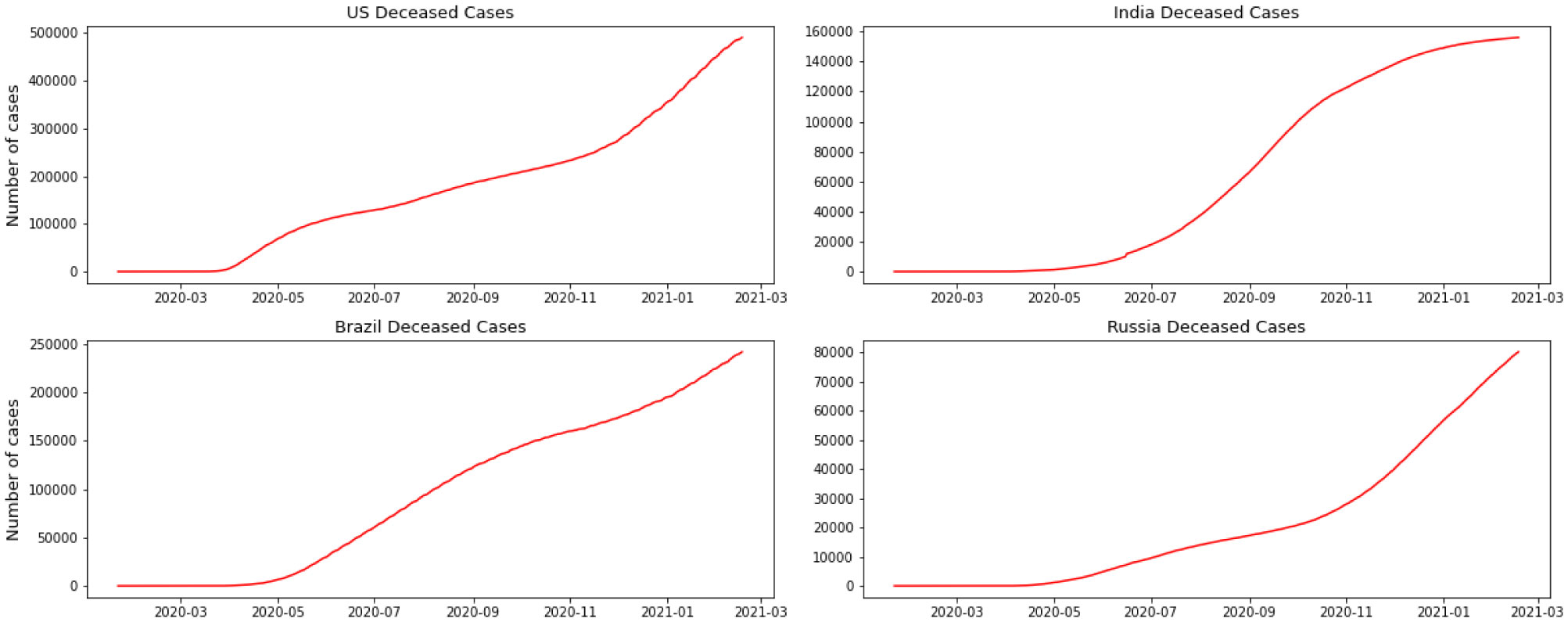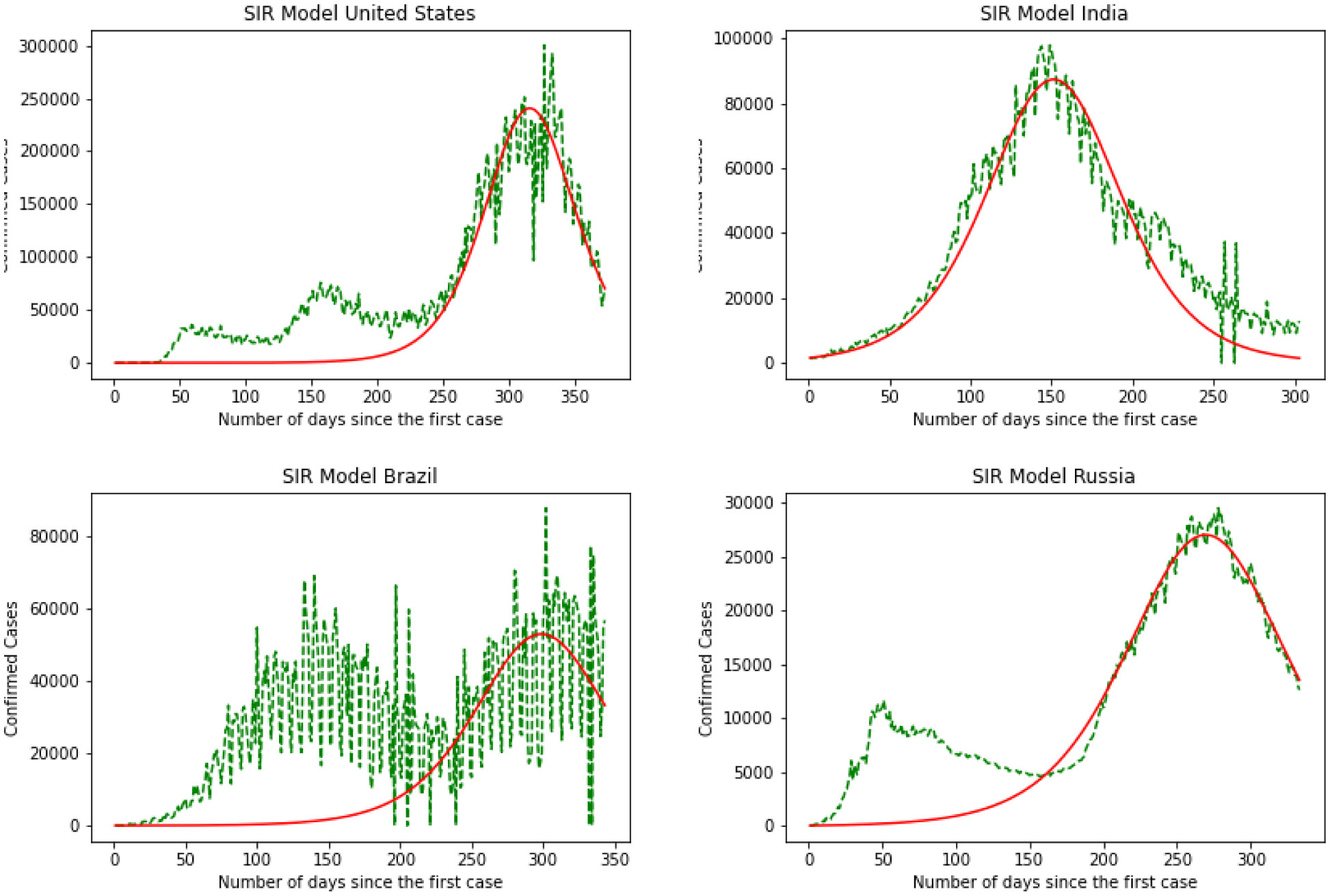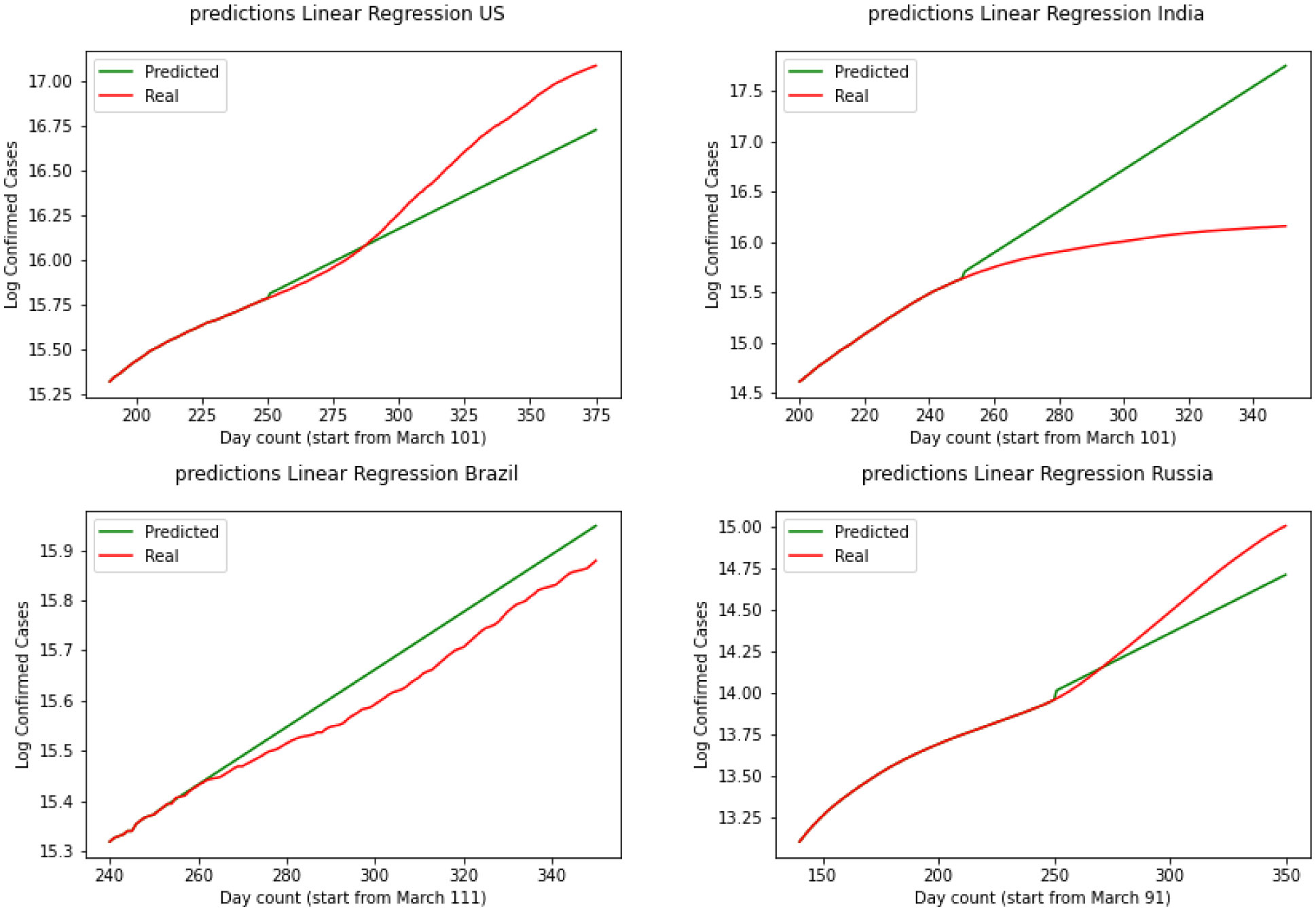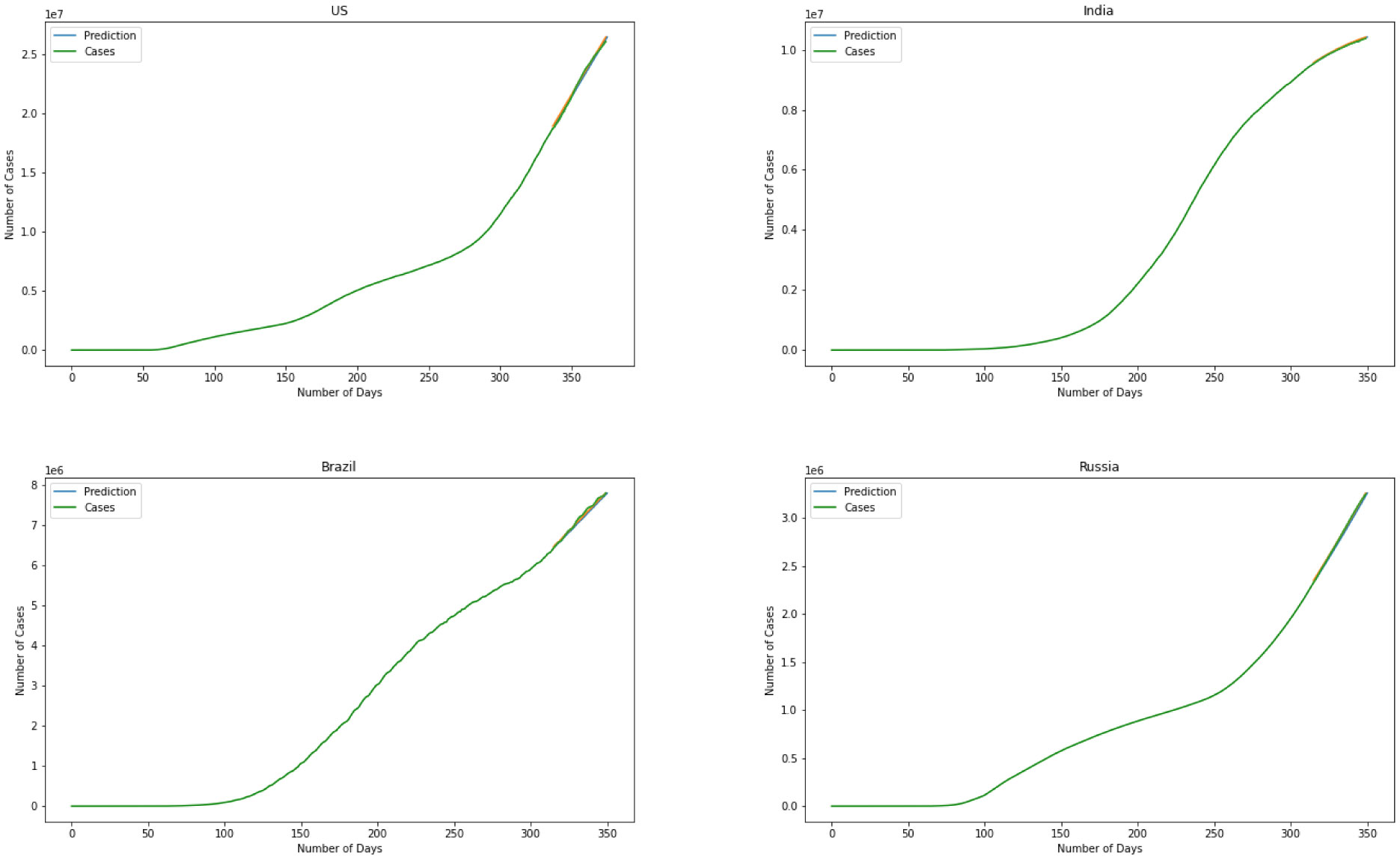|
[1]
|
Keshk SMAS (2014) Bacterial cellulose production and its industrial applications. J Bioproces Biotechniq 4: 2.
|
|
[2]
|
Rajwade JM, Paknikar KM, Kumbhar JV (2015) Applications of bacterial cellulose and its composites in biomedicine. Appl Microbiol Biotechnol 99: 2491-2511. doi: 10.1007/s00253-015-6426-3

|
|
[3]
|
Araujo S, Moreira da Silva F, Gouveia IC (2015) The role of technology towards a new bacterial-cellulose-based material for fashion design. J Ind Intell Inf 3: 168-172.
|
|
[4]
|
Castellane TCL, Persona MR, Campanharo JC, et al. (2015) Production of exopolysaccharide from rhizobia with potential biotechnological and bioremediation applications. Int J Biol Macromol 74: 515-522. doi: 10.1016/j.ijbiomac.2015.01.007

|
|
[5]
|
Ross P, Weinhouse H, Aloni Y, et al. (1987) Regulation of cellulose synthesis in Acetobacter xylinum by cyclic diguanylic acid. Nature 325: 279-281. doi: 10.1038/325279a0

|
|
[6]
|
Ude S, Arnolod DL, Moon CD, et al. (2006) Biofilm formation and cellulose expression among diverse environmental Pseudomonas isolates. Environ Microbiol 8: 1997-2011.
|
|
[7]
|
Zogaj X, Nimtz M, Rohde M, et al. (2001) The multicellular morphotypes of Salmonella typhimurium and Escherichia coli produce cellulose as the second component of the extracellular matrix. Mol Microbiol 39: 1452-1463. doi: 10.1046/j.1365-2958.2001.02337.x

|
|
[8]
|
Romling U (2002) Molecular biology of cellulose production in bacteria. ResMicrobiol 153: 205-212.
|
|
[9]
|
Solano C, Garcia B, Valle J, et al. (2002) Genetic analysis of Salmonella enteritidis biofilm formation: critical role of cellulose. Mol Microbiol 43: 793-808. doi: 10.1046/j.1365-2958.2002.02802.x

|
|
[10]
|
Mohite BV, Patil SV (2014) Physical, structural, mechanical and thermal characterization of bacterial cellulose by G. hansenii NCIM 2529. Carbohyd Polym106: 132-141.
|
|
[11]
|
Morgan JL, Strumillo J, Zimmer J (2013) Crystallographic snapshot of cellulose synthesis and membrane translocation. Nature 493: 181-186.
|
|
[12]
|
Amikam D, Benziman M (1989) Cyclic diguanylic acid and cellulose synthesis in Agrobacterium tumefaciens. J Bacteriol 171: 6649-6655.
|
|
[13]
|
Romling U (2012) Cyclic di-GMP, an established secondary messenger still speeding up. Environ Microbiol 14: 1817-1829.
|
|
[14]
|
Whiteley CG, Lee DJ (2014) Bacterial diguanylate cyclases: Structure, function and mechanism in exopolysaccharide biofilm development. Biotech Adv 33: 124-41.
|
|
[15]
|
Morgan JL, Mcnamara JT, Zimmer J (2014) Mechanism of activation of bacterial cellulose synthase by cyclic di-GMP. Nature Struc Biol 21: 489-496.
|
|
[16]
|
Dazzo FB, Truchet GL, Sherwood JE, et al. (1984) Specific phases of root hair attachment in the Rhizobium trifolii-clover symbiosis. Appl Environ Microbiol 48: 1140-1150.
|
|
[17]
|
Mateos PF, Baker DL, Philip-Hollingsworth S, et al. (1995) Direct in situ identification of cellulose microfibrils associated with Rhizobium leguminosarum biovar trifolii attached to the root epidermis of white clover. Can J Microb 41: 202-207. doi: 10.1139/m95-028

|
|
[18]
|
Flemming HC, Wingender J (2010) The biofilm matrix. Nat Rev 8: 624-633.
|
|
[19]
|
McCrate OA, Zhou X, Reichhardt C, et al. (2013) Sum of the Parts: Composition and Architecture of the Bacterial Extracellular Matrix. J Mol Biol 425: 4286-4294. doi: 10.1016/j.jmb.2013.06.022

|
|
[20]
|
Koeck DE, Pechtl A, Zerlov VV, et al., (2014) Genomics of cellulolytic bacteria Curr Opin Biotech 29: 171-183. doi: 10.1016/j.copbio.2014.07.002

|
|
[21]
|
Lombard V, Ramulu HG, Drula E, et al. (2014) The carbohydrate-active enzymes database (CAZy) in 2013. Nucleic Acids Res 42: D490-D495. doi: 10.1093/nar/gkt1178

|
|
[22]
|
Davies G, Henrissat B (1995) Structures and mechanisms of glycosyl hydrolases. Structure 3: 853-859. doi: 10.1016/S0969-2126(01)00220-9

|
|
[23]
|
Bourne Y, Henrissat B (2001) Glycoside hydrolases and glycosyltransferases: families and functional modules. Curr Opin Struct Biol 11: 593-600. doi: 10.1016/S0959-440X(00)00253-0

|
|
[24]
|
Sadhu S, Maiti TK (2013) Cellulase production by bacteria: a review. British Microbiology Research Journal 3: 235-258. doi: 10.9734/BMRJ/2013/2367

|
|
[25]
|
Fuji K, Satomi M, Fukui Y, et al. (2013) Streptomyces abietis sp. nov., a cellulolytic bacterium isolated from soil of a pine forest. Int J Syst Evol Microbiol 63: 4754-4759.
|
|
[26]
|
Cole JK, Gieler BA, Heisler DL, et al. (2013) Kallotenue papyrolyticum gen. nov., sp. nov., a cellulolytic and filamentous thermophile that represents a novel lineage (Kallotenuales ord. nov., Kallotenuaceae fam. nov.) within the class Chloroflexia. Int J Syst Evol Microbiol 63: 4675-4682.
|
|
[27]
|
Podosokorskaya OA, Bonch-Osmolovskaya EA, Novikov AA, et al. (2013) Ornatilinea apprima gen. nov., sp. nov., a cellulolytic representative of the class Anaerolineae. Int J Syst Evol Microbiol 63: 86-92.
|
|
[28]
|
Hatamoto M, Kaneshige M, Nakamura A, et al. (2014) Bacteroides luti sp. nov., an anaerobic, cellulolytic and xylanolytic bacterium isolated from methanogenic sludge. Int J Syst Evol Microbiol 64: 1770-1774.
|
|
[29]
|
Kusube M, Sugihara A, Moriwaki Y, et al. (2014) Alicyclobacillus cellulosilyticus sp. nov., a thermophilic, cellulolytic bacterium isolated from steamed Japanese cedar chips from a lumbermill. Int J Syst Evol Microbiol 64: 2257-2263.
|
|
[30]
|
Horino H, Fujita T, Tonouchi A (2014) Description of Anaerobacterium chartisolvens gen. nov., sp. nov., an obligately anaerobic bacterium from Clostridium rRNA cluster III isolated from soil of a Japanese rice field, and reclassification of Bacteroides cellulosolvens Murray et al. 1984 as Pseudobacteroides cellulosolvens gen. nov., comb. nov. Int J Syst Evol Microbiol 64: 1296-1303.
|
|
[31]
|
Bing W, Wang H, Zheng B, et al. (2015) Caldicellulosiruptor changbaiensis sp. nov., a cellulolytic and hydrogen-producing bacterium from a hot spring. Int J Syst Evol Microbiol 65: 293-297.
|
|
[32]
|
Koeck DE, Ludwig W, Wanner G, et al. (2015) Herbinix hemicellulosilytica, gen. nov., sp. nov., a thermophilic cellulose-degrading bacterium isolated from a thermophilic biogas reactor. Int J Syst Evol Microbiol [in press].
|
|
[33]
|
Menéndez E, Ramírez-Bahena MH, Fabryová A, et al. (2015) Pseudomonas coleopterorum sp. nov., a cellulase producing bacterium isolated from the bark beetle Hylesinus fraxini. Int J Syst Evol Microbiol [in press].
|
|
[34]
|
Huang S, Sheng P, Zhang H (2012) Isolation and Identification of Cellulolytic Bacteria from the Gut of Holotrichia parallela Larvae (Coleoptera: Scarabaeidae) Int J Mol Sci 13: 2563-2577.
|
|
[35]
|
Hameed A, Shahina M, Lai WA, et al. (2015) Oricola cellulosilytica gen. nov., sp. nov., a cellulose-degrading bacterium of the family Phyllobacteriaceae isolated from surface seashore water, and emended descriptions of Mesorhizobium loti and Phyllobacterium myrsinacearum. A van Leeuw J Microb 107: 759-771.
|
|
[36]
|
Sethi S, Datta A, Gupta L, et al. (2013) Optimization of Cellulase Production from Bacteria Isolated from Soil. ISRN Biotechnology 2013: 985685.
|
|
[37]
|
Howard JA, Hood E (2005) Bioindustrial and biopharmaceutical products produced in plants. Adv Agron 85: 91-124.
|
|
[38]
|
Yu LX, Gray BN, Rutzke CJ, et al. (2007) Expression of thermostable microbial cellulases in the chloroplasts of nicotine-free tobacco. J Biotechnol1 31: 362-369.
|
|
[39]
|
Rastogi G, Muppidi GL, Gurram RN, et al. (2009) Isolation and characterization of cellulose-degrading bacteria from the deep subsurface of the Homestake gold mine, Lead, South Dakota, USA. J Ind Microbiol Biotechnol 36: 585-598. doi: 10.1007/s10295-009-0528-9

|
|
[40]
|
Trivedi N, Gupta V, Kumar M, et al. (2011) An alkali-halotolerant cellulase from Bacillus flexus isolated from green seaweed Ulva lactuca. Carbohyd Polym 83: 891-897. doi: 10.1016/j.carbpol.2010.08.069

|
|
[41]
|
DiPasquale L, Romano I, Picardello G, et al., (2014) Characterization of a native cellulase activity from an anaerobic thermophilic hydrogen-producing bacterium Thermosipho sp. strain 3. Ann Microbiol 64: 1493-1503. doi: 10.1007/s13213-013-0792-9

|
|
[42]
|
Dalmaso GZL, Ferreira D, Vermelho AB (2015) Marine extremophiles: a source of hydrolases for biotechnological applications. Mar Drugs 13: 1925-1965. doi: 10.3390/md13041925

|
|
[43]
|
Kinet R, Destain J, Hiligsmann S, et al. (2015) Thermophilic and cellulolytic consortium isolated from composting plants improves anaerobic digestion of cellulosic biomass: Toward a microbial resource management approach. Bioresource Technol 189: 138-144. doi: 10.1016/j.biortech.2015.04.010

|
|
[44]
|
Voget S, Steele HL, Streit WR (2006) Characterization of a metagenome-derived halotolerant cellulase. J Biotechnol 126: 26-36. doi: 10.1016/j.jbiotec.2006.02.011

|
|
[45]
|
Duan CJ, Feng JX (2010) Mining metagenomes for novel cellulase genes. Biotechnol Lett 32: 1765-1775.
|
|
[46]
|
Liu J, Liu W, Zhao X, et al. (2011) Cloning and functional characterization of a novel endo-β-1,4-glucanase gene from a soil-derived metagenomic library. Appl Microbiol Biotechnol 89: 1083-1092. doi: 10.1007/s00253-010-2828-4

|
|
[47]
|
Adrio JL, Demain AL (2014) Microbial enzymes: tools for biotechnological processes. Biomolecules 4: 117-139.
|
|
[48]
|
Mori T, Kamei I, Hirofumi H, et al. (2014) Identification of novel glycosyl hydrolases with cellulolytic activity against crystalline cellulose from metagenomic libraries constructed from bacterial enrichment cultures. Springer Plus 3: 365.
|
|
[49]
|
Attri S, Garg G (2014) Isolation of microorganisms simultaneously producing xylanase, pectinase and cellulase enzymes using cost effective substrates. J Innovative Biol 1: 45-50.
|
|
[50]
|
Singh G, Singh AK (2014) Alternative substrates for the amylase and cellulase production with rhizobial isolates. Int J Avd Res Sci Technol 3: 79-85.
|
|
[51]
|
Teather RM, Wood PJ (1982) Use of Congo red-polysaccharide interactions in enumeration and characterization of cellulolytic bacteria from the bovine rumen. Environ Microbiol 43: 777-780.
|
|
[52]
|
Kasana RC, Salwan R, Dhar H, et al. (2008) A rapid and easy method for the detection of microbial cellulases on agar plates using gram’s iodine. Curr Microbiol 57: 503-507. doi: 10.1007/s00284-008-9276-8

|
|
[53]
|
Taha M, Kadali KK, Al-Hothaly K, et al. (2015) An effective microplate method (Biolog MT2) for screening native lignocellulosic-straw-degrading bacteria. Ann Microbiol [in press].
|
|
[54]
|
Zhang YHP, Himmel ME, Mielenz JR (2006) Outlook of cellulase improvement: screening and selection strategies. Biotechnol Adv 24: 452-481. doi: 10.1016/j.biotechadv.2006.03.003

|
|
[55]
|
Sadhu S, Ghosh PK, Aditya G, et al. (2014) Optimization and strain improvement by mutation for enhanced cellulase production by Bacillus sp. (MTCC10046) isolated from cow dung. J King Saud Univ 26: 323-332.
|
|
[56]
|
Sangkharak K, Vangsirikul P, Janthachat S (2012) Strain improvement and optimization for enhanced production of cellulase in Cellulomonas sp. TSU-03. African J Microbiol Res 6: 1079-1084.
|
|
[57]
|
Maki M, Leung KT, Qin W (2009) The prospects of cellulose-producing bacteria for the bioconversion of lignocellulosic biomass. Int J Biol Sci 5: 500-516.
|
|
[58]
|
Zhao H, Chockalingam K, Chen Z (2002) Directed evolution of enzymes and pathways for industrial biocatalysis. Curr Opin Biotechnol 13: 104-110. doi: 10.1016/S0958-1669(02)00291-4

|
|
[59]
|
Cherry JR, Fidantsef AL (2003) Directed evolution of industrial enzymes: an update. Curr Opin Biotechnol 14: 438-443.
|
|
[60]
|
Hasunuma T, Okazaki F, Okai N, et al. (2013) A review of enzymes and microbes for lignocellulosic biorefinery and the possibility of their application to consolidated bioprocessing technology. Bioresource Technol 135: 513-522. doi: 10.1016/j.biortech.2012.10.047

|
|
[61]
|
Garvey M, Klose H, Fischer R, et al. (2014) Cellulases for biomass degradation: comparing recombinant cellulase expression platforms. Trends Biotechnol 31: 581-593.
|
|
[62]
|
Juturu V, Wu JC (2014) Microbial cellulases: Engineering, production and applications. Renew Sust Energ Rev 33: 188-203. doi: 10.1016/j.rser.2014.01.077

|
|
[63]
|
Lambertz C, Garvey M, Klinger J, et al. (2014) Challenges and advances in the heterologous expression of cellulolytic enzymes: a review. Biotechnol Biofuels 7: 135. doi: 10.1186/s13068-014-0135-5

|
|
[64]
|
Munjal N, Jaewd K, Wajid S, et al. (2015) A Constitutive Expression System for Cellulase Secretion in Escherichia coli and Its Use in Bioethanol Production. PLoS ONE 10: e0119917. doi: 10.1371/journal.pone.0119917

|
|
[65]
|
Chung D, Cha M, Guss AM, et al. (2015) Direct conversion of plant biomass to ethanol by engineered Caldicellulosiruptor bescii. P Natl Acad Sci U S A 111: 8931-8936.
|
|
[66]
|
Robledo M, Jimenez-Zurdo JI, Soto MJ, et al. (2011) Development of functional symbiotic white clover root hairs and nodules requires tightly regulated production of rhizobial cellulase CelC2. Mol Plant Microbe Interact 24: 798-807. doi: 10.1094/MPMI-10-10-0249

|
|
[67]
|
Batthacharya AS, Batthacharya A, Pletschke BI (2015) Synergism of fungal and bacterial cellulases and hemicellulases: a novel perspective for enhanced bio-ethanol production. Biotechnol Lett [in press].
|
|
[68]
|
Demain AL, Vaishnav P (2009) Production of recombinant proteins by microbes and higher organisms. Biotechnol Adv 27: 297-306. doi: 10.1016/j.biotechadv.2009.01.008

|
|
[69]
|
Streatfield AJ (2007) Approaches to achieve high-level heterologous protein production in plants. Plant Biotechnol J 5: 2-15. doi: 10.1111/j.1467-7652.2006.00216.x

|
|
[70]
|
Ziegelhoffer T, Will J, Austin-Phillips S (1998) Expression of bacterial cellulase genes in transgenic alfalfa (Medicago sativa L.), potato (Solanum tuberosum L.) and tobacco (Nicotiana tabacum L.) Mol Breeding 5: 309-318.
|
|
[71]
|
Brunecki R, Selig MJ, Vinzant TB, et al. (2011) In planta expression of A. cellulolyticus Cel5A endocellulase reduces cell wall recalcitrance in tobacco and maize. Biotechnol Biofuels 4: 1.
|
|
[72]
|
Petersen K, Bock R (2011) High-level expression of a suite of thermostable cell wall-degrading enzymes from the chloroplast genome. Plant Mol Biol 76: 311-321. doi: 10.1007/s11103-011-9742-8

|
|
[73]
|
Lilly M, Fierobe HP, van Zyl WH, et al. (2009) Heterologous expression of a Clostridium minicellulosome in Saccharomyces cerevisiae. FEMS Yeast Res 9: 1236-1249. doi: 10.1111/j.1567-1364.2009.00564.x

|
|
[74]
|
Bayer EA, Shimon LJW, Lamed R (1998) Cellulosomes: structure and ultrastructure. J Struct Biol 124: 221-234. doi: 10.1006/jsbi.1998.4065

|
|
[75]
|
Bayer EA, Belaich JP, Sholam Y, et al. (2004) The cellulosomes: multienzyme machines for degradation of plant cell wall polysaccharides. Ann Rev Microbiol 58: 521-554. doi: 10.1146/annurev.micro.57.030502.091022

|
|
[76]
|
Fontes CMGA, Gilbert HJ (2010) Cellulosomes: highly efficient nanomachines designed to deconstruct plant cell wall complex carbohydrates. Ann Rev Biochem 79: 655-681. doi: 10.1146/annurev-biochem-091208-085603

|
|
[77]
|
Shinoda S, Kanamasa S, Arai M (2012) Cloning of an endoglycanase gene from Paenibacillus cookii and characterization of the recombinant enzyme. Biotechnol Lett 34: 281-286. doi: 10.1007/s10529-011-0759-5

|
|
[78]
|
Shi R, Li Z, Ye Q, et al. (2013) Heterologous expression and characterization of a novel thermo-halotolerant endoglucanase Cel5H from Dictyoglomus thermophilum. Bioresource Technol 142: 338-344. doi: 10.1016/j.biortech.2013.05.037

|
|
[79]
|
Wei KSC, Teoh TC, Koshy P, et al. (2015) Cloning, expression and characterization of the endoglucanase gene from Bacillus subtilis UMC7 isolated from the gut of the indigenous termite Macrotermes malaccensis in Escherichia coli. Electronic J Biotechnol 18: 103-109. doi: 10.1016/j.ejbt.2014.12.007

|
|
[80]
|
Bhat MK (2000) Cellulases and related enzymes in biotechnology. Biotechnology Adv 18: 355-383. doi: 10.1016/S0734-9750(00)00041-0

|
|
[81]
|
Wilson DB (2009) Cellulases and biofuels. Curr Opin Biotechnol20: 295-299.
|
|
[82]
|
Kuhad RC, Gupta R, Singh A. (2011) Microbial cellulases and their industrial applications. Enzyme Res 2011: 280696.
|
|
[83]
|
McMullan G, Meehan C, Connely M, et al. (2001) Microbial decolourisation and degradation of textile dyes. Appl Microbiol Biotechnol 56: 81-87. doi: 10.1007/s002530000587

|
|
[84]
|
Anish R, Rahman MS, Rao M (2007) Application of cellulases from an alkalothermophilic Thermomonospora sp. in biopolishing of denims. Biotechnol Bioeng 96: 48-56. doi: 10.1002/bit.21175

|
|
[85]
|
Ladeira SA, Cruz E, Delatorre AB, et al. (2015) Cellulase production by thermophilic Bacillus sp. SMIA-2 and its detergent compatibility. Electronic J Biotechnol 18: 110-115.
|
|
[86]
|
Yu M, Qiu Y, Chen W, et al., (2015) Action modes of recombinant endocellulase, EGA, and its domains on cotton fabrics. Biotechnol Lett [in press].
|
|
[87]
|
Singh K (2015) Role of Enzymes in Fruit juices Clarification during Processing: A review. Int J Biol Technology 6: 114-124.
|
|
[88]
|
Cinar I (2004) Effects of cellulase and pectinase concentrations on the colour yield of enzyme extracted plant carotenoids. Process Biochem 40: 945-949.
|
|
[89]
|
Wilkins MR, Widmer WW, Grohmann K, et al. (2007) Hydrolysis of grapefruit peel waste with cellulase and pectinase enzymes. Bioresource Technol 98: 1596-1601. doi: 10.1016/j.biortech.2006.06.022

|
|
[90]
|
Meyer AS, Jepsen SM, Sorensen NS (1998) Enzymatic Release of Antioxidants for Human Low-Density Lipoprotein from Grape Pomace. J Agr Food Chem 46: 2399-2446.
|
|
[91]
|
Bamforth CW (2009) Current perspectives on the role of enzymes in brewing. J Cereal Sci 50: 353-357 doi: 10.1016/j.jcs.2009.03.001

|
|
[92]
|
Himmel ME, Ruth MF, Wyman CE (1999) Cellulase for commodity products from cellulosic biomass. Curr Opin Biotechnol 10: 358-364. doi: 10.1016/S0958-1669(99)80065-2

|
|
[93]
|
Dhiman TR, Zaman MS, MacQueen IS, et al. (2002) Influence of corn processing and frequency of feeding on cow performance. J Dairy Sci 85: 217-226. doi: 10.3168/jds.S0022-0302(02)74070-8

|
|
[94]
|
Beauchemin KA, Colombatto D, Morgavi DP, et al. (2003) Use of exogenous fibrolytic enzymes to improve feed utilization by ruminants. J Anim Sci 81: E37-E47.
|
|
[95]
|
Wongputtissin P, Khanongnuch C, Kongbuntad W, et al. (2014) Use of Bacillus subtilis isolates from Tua-nao towards nutritional improvement of soya bean hull for monogastric feed application. Lett App Microbiol 59: 328-333. doi: 10.1111/lam.12279

|
|
[96]
|
Shatya TA, Khan M (2014) Diversity of glycosyl hydrolase enzymes from metagenome and their application in food industry. J Food Sci 79: R2149-R 2156.
|
|
[97]
|
Pottkamper J, Barthen P, Ilmberger N, et al. (2009) Applying metagenomics for the identification of bacterial cellulases that are stable in ionic liquids. Green Chem 11: 957-965. doi: 10.1039/b820157a

|
|
[98]
|
Eriksson KEL (1990) Biotechnology in the pulp and paper industry.Wood Sci Technol 24: 79-101.
|
|
[99]
|
Viesturs U, Leite M, Eisimonte M, et al. (1999) Biological deinking, technology for the recycling of office waste papers. Bioresource Technol 67: 255-265. doi: 10.1016/S0960-8524(98)00119-9

|
|
[100]
|
Bajpai P (1999) Application of Enzymes in the Pulp and Paper Industry. Biotechnol Prog 15: 147-157. doi: 10.1021/bp990013k

|
|
[101]
|
Garcia O, Torres AL, Colom JF, et al. (2002) Effect of cellulase-assisted refining on the properties of dried and never-dried eucalyptus pulp. Cellulose 9: 115-125. doi: 10.1023/A:1020191622764

|
|
[102]
|
Lynd LR, Laser MS, Bransby D, et al. (2008) How biotech can transform biofuels. Nat Biotechnol 26: 169-172. doi: 10.1038/nbt0208-169

|
|
[103]
|
Yang SJ, Kataeva I, Wiegel J, et al. (2010) Classification of ‘Anaerocellum thermophilum’ strain DSM 6725 as Caldicellulosiruptor bescii sp. nov. Int J Syst Evol Microbiol 60: 2011-2015 doi: 10.1099/ijs.0.017731-0

|
|
[104]
|
Kanafusa-Shinkai S, Wakayama J, Tsukamoto K, et al. (2013) Degradation of microcrystalline cellulose and non-pretreated plant biomass by a cell-free extracellular cellulase/hemicellulase system from the extreme thermophilic bacterium Caldicellulosiruptor bescii. J Biosci Bioeng 115: 64-70. doi: 10.1016/j.jbiosc.2012.07.019

|
|
[105]
|
Scully SM, Orlygsson J (2015) Recent advances in second generation ethanol production by thermophilic bacteria. Energies 8: 1-30.
|
|
[106]
|
Assareh R, Zahiri HS, Noghabi KA, et al. (2012) Characterization of the newly isolated Geobacillus sp. T1, the efficient cellulose-producer on untreated barley and wheat straws. Bioresource Technol 120: 99-105.
|
|
[107]
|
Gaur R, Tiwati S (2015) Isolation, production, purification and characterization of an organic-solvent-thermostable alkalophilic cellulase from Bacillus vallismortis RG-07. BMC Biotechnol 15: 19. doi: 10.1186/s12896-015-0129-9

|
|
[108]
|
Li Y, Horsman M, Wu N, et al. (2008) Biofuels from microalgae. Biotechnol Prog 24: 815-820.
|
|
[109]
|
Muñoz C, Hidalgo C, Zapata M, et al. (2014) Use of cellulolytic marine bacteria for enzymatic pretreatment in microalgal biogas production. App Environ Microbiol 80: 4199-4206. doi: 10.1128/AEM.00827-14

|
|
[110]
|
Rinaudo M (2006) Chitin and chitosan: Properties and applications. Prog Polym Sci 31: 603-632. doi: 10.1016/j.progpolymsci.2006.06.001

|
|
[111]
|
Pillai CKS, Paul W, Sharma CP (2009) Chitin and chitosan polymers: Chemistry, solubility and fiber formation. Prog Polym Sci 34: 641-678. doi: 10.1016/j.progpolymsci.2009.04.001

|
|
[112]
|
Zhang J, Xia W, Liu P, et al. (2010) Chitosan Modification and Pharmaceutical/Biomedical Applications. Mar Drugs 8: 1962-1987. doi: 10.3390/md8071962

|
|
[113]
|
Qin C, Zhou B, Zeng L, et al. (2004) The physicochemical properties and antitumor activity of cellulase-treated chitosan. Food Chem 84: 107-115. doi: 10.1016/S0308-8146(03)00181-X

|
|
[114]
|
Lin SB, Lin YC, Chen HH (2009) Low molecular weight chitosan prepared with the aid of cellulase, lysozyme and chitinase: Characterisation and antibacterial activity. Food Chem 116: 47-53. doi: 10.1016/j.foodchem.2009.02.002

|
|
[115]
|
Liu J, Xia W (2006) Purification and characterization of a bifunctional enzyme with chitosanase and cellulase activity from commercial cellulase. Biochem Eng J 30: 82-87. doi: 10.1016/j.bej.2006.02.005

|
|
[116]
|
Xie Y, Wei Y, Hu J (2010) Depolymerization of Chitosan with a Crude Cellulase Preparation from Aspergillus niger. Appl Biochem Biotechnol 160: 1074-1083. doi: 10.1007/s12010-009-8559-2

|
|
[117]
|
Pedraza-Reyes M, Gutierrez-Corona F (1997) The bifunctional enzyme chitosanase-cellulase produced by the gram-negative microorganism Myxobacter sp. AL-1 is highly similar to Bacillus subtilis endoglucanases. Arch Microbiol 168: 321-327.
|
|
[118]
|
Tanabe T, Morinaga K, Fukamizo T, et al. (2003) Novel Chitosanase from Streptomyces griseus HUT 6037 with Transglycosylation Activity. Biosci Biotechnol Biochem 67: 354-364. doi: 10.1271/bbb.67.354

|
|
[119]
|
Sinha S, Tripathi P, Chand S (2012) A New Bifunctional Chitosanase Enzyme from Streptomyces sp. and Its Application in Production of Antioxidant Chitooligosaccharides. Appl Biochem Biotechnol 167: 1029-1039.
|
|
[120]
|
Zhang Z, Wang Y, Ruan J (1998) Reclassification of Thermomonospora and Microtetraspora. J Syst Bacteriol 48: 411-422. doi: 10.1099/00207713-48-2-411

|
|
[121]
|
Lao G, Changas GS, Jung ED, et al. (1991) DNA Sequences of Three 3-1,4-Endoglucanase Genes from Thermomonospora fusca. J Bacteriol 173: 3397-3407.
|
|
[122]
|
Ali WAA, Gondal ZI, Yammahi AAAK, et al. (2013) A case of small bowel obstruction due to phytobezoars. J Surg Case Report 7: 1.
|
|
[123]
|
Kramer SJ, Pochapin MB (2012) Gastric Phytobezoar Dissolution with Ingestion of Diet Coke and Cellulase. Gastroen Hepatol 8: 770-772.
|
|
[124]
|
Ladas SD, Kamberoglou D, Karamanolis G, et al. (2013) Systematic review: Coca-Cola can effectively dissolve gastric phytobezoars as a first-line treatment. Aliment Pharmacol Ther 37: 169-173. doi: 10.1111/apt.12141

|
|
[125]
|
Pinos N, Moreno-Merino S, Congregado M (2015) Phytobezoar by aloe vera as long term complication after oesophagectomy resolved using cellulase. Int J Surg Case Report 13: 37-39. doi: 10.1016/j.ijscr.2015.05.008

|
|
[126]
|
Robert C, Bernalier-Donadille A (2003) The cellulolytic micro£ora of the human colon: evidence of microcrystalline cellulose-degrading bacteria in methane-excreting subjects. FEMS Microbiol Ecol 46: 81-89. doi: 10.1016/S0168-6496(03)00207-1

|
|
[127]
|
Wedekind KJ, Mansfield HR, Montgomery L (1988) Enumeration and isolation of cellulolytic and hemicellulolytic bacteria from human feces. App Environ Microbiol 54: 1530-1535
|
|
[128]
|
Robert C, Chassard C, Lawson PA, et al. (2007) Bacteroides cellulosilyticus sp. nov., a cellulolytic bacterium from the human gut microbial community. Int J Syst Evol Microbiol 57: 1516-1520
|
|
[129]
|
Chassard C, Delmas E, Robert C, et al. (2012) Ruminococcus champanellensis sp. nov., a cellulose-degrading bacterium from human gut microbiota. Int J Syst Evol Microbiol 62: 138-143.
|
|
[130]
|
Martinez AJ, Visvesvara GS (1997) Free-living, amphizoic and opportunistic amebas. Brain Pathol 97: 583-98.
|
|
[131]
|
Lakhundi S, Siddiqui R, Khan NA (2015) Cellulose degradation: a therapeutic strategy in the improved treatment of Acanthamoeba infections. Parasite Vector 8: 23. doi: 10.1186/s13071-015-0642-7

|
|
[132]
|
Loiselle M, Anderson KW (2003) The use of cellulase in inhibiting biofilm formation from organisms commonly found on medical implants. Biofouling 19: 77-85. doi: 10.1080/0892701021000030142

|
|
[133]
|
Ma L, Conover M, Lu H, et al. (2009) Assembly and development of the Pseudomonas aeruginosa biofilm matrix. PLoS Pathog 5: e1000354. doi: 10.1371/journal.ppat.1000354

|
|
[134]
|
Rajasekharan SK, Ramesh S (2013) Cellulase inhibits Burkholderia cepacia biofilms on diverse prosthetic materials. Polish J Microbiol 62: 327-330.
|
|
[135]
|
Huertas MG, Zarate L, Acosta IC, et al. (2014) Klebsiella pneumoniae yfiRNB operon affects biofilm formation, polysaccharide production and drug susceptibility. Microbiology 160: 2595-2606. doi: 10.1099/mic.0.081992-0

|
|
[136]
|
Glick BR (2012) Plant growth-promoting bacteria: mechanisms and applications. Scientifica, 2012.
|
|
[137]
|
Haldar S, Sengupta S (2015) Plant-microbe cross-talk in the rhizosphere: insight and biotechnological potential. Open Microbiol J 9: 1-7.
|
|
[138]
|
El-Tarabily KA, SykesML, Kurtböke ID, et al. (1996) Synergistic effects of a cellulose-producing Micromonospora carbonacea and an antibiotic-producing Streptomyces violascens on the suppression of Phytophthora cinnamomi root rot of Banksia grandis. Can J Botany 74: 618-624. doi: 10.1139/b96-078

|
|
[139]
|
Naing KW, Anees M, Nguyen XH, et al. (2014) Biocontrol of Late Blight Disease (Phytophthora capsici) of Pepper and the Plant Growth Promotion by Paenibacillus ehimensis KWN38. J Phytopathol 162: 367-376. doi: 10.1111/jph.12198

|
|
[140]
|
Han W, He M (2010) The application of exogenous cellulase to improve soil fertility and plant growth due to acceleration of straw decomposition. Bioresource Technol 101: 3724-3731.
|
|
[141]
|
Compant S, Reiter B, Sessitsch A, et al. (2005) Endophytic colonization of Vitis vinifera l. by plant growth-promoting bacterium Burkholderia sp. strain PsJN App Environ Microbiol 71: 1685-1693.
|










 DownLoad:
DownLoad:
